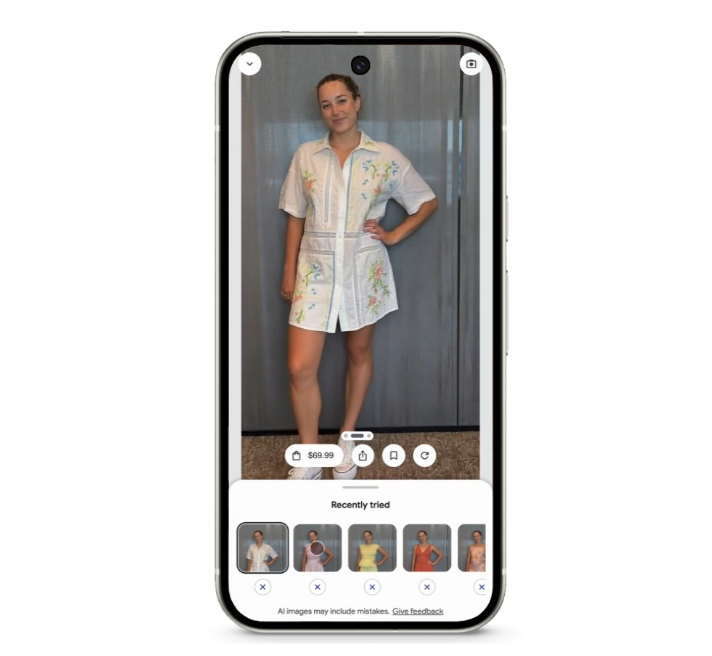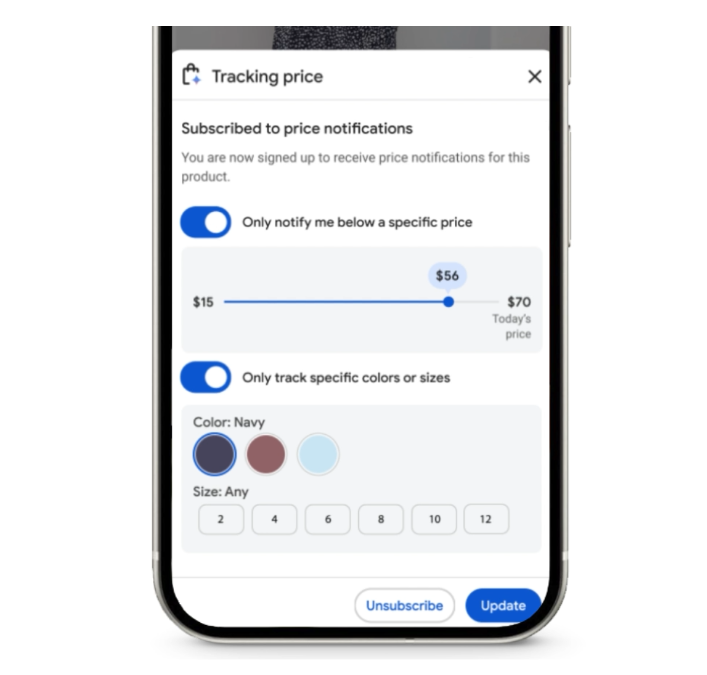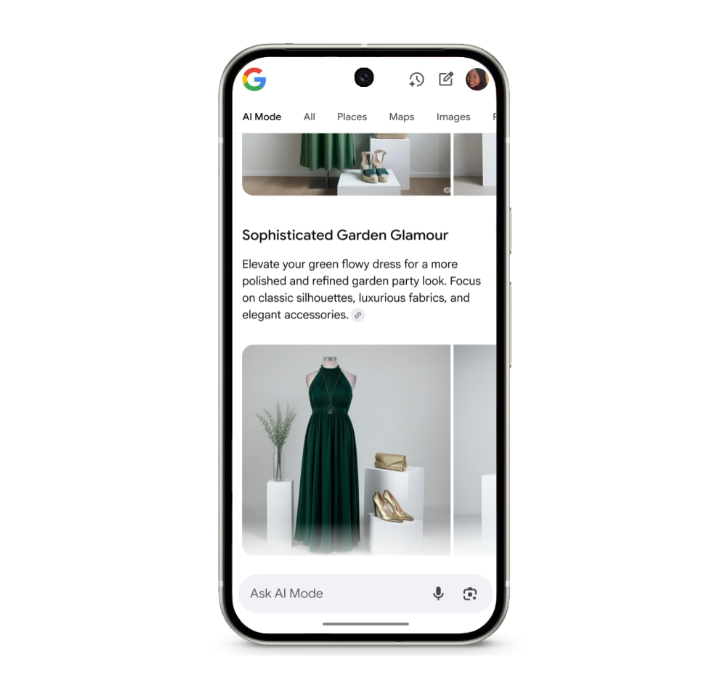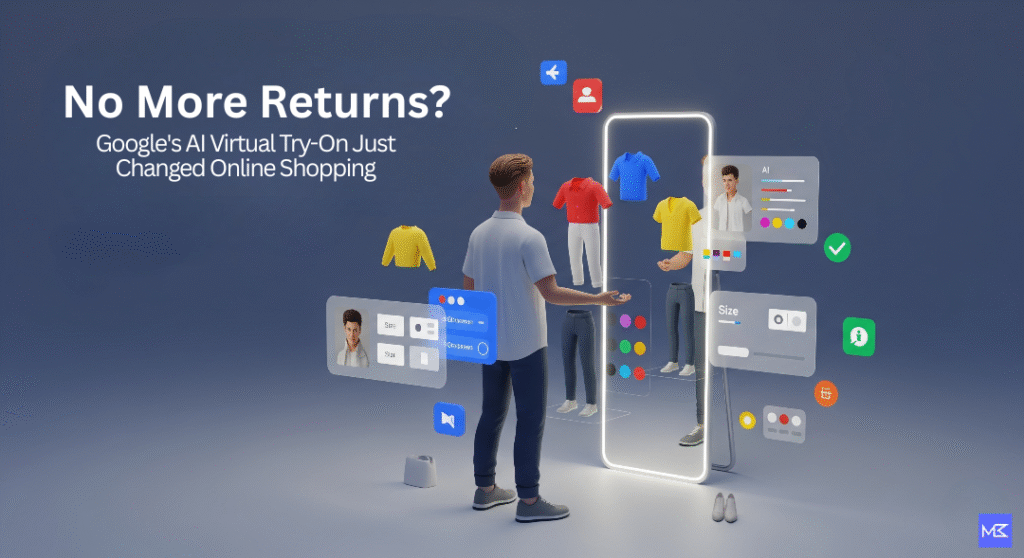We’ve all been there. That eagerly awaited package arrives, you rip it open, try on the new top and it just doesn’t look the way it did on the model. Get ready for a deep sigh, some packing tape, and the annoying task of returning things. This common frustration is a significant downside to the convenience of online shopping. But what if that problem could go away for good? Google is stepping into the ring with a bold claim. It’s launching a suite of AI-powered shopping tools. Leading the way is a game-changing virtual try-on feature. This feature promises to change how we click ‘add to cart’ forever.
This blog post will dive deep into Google’s latest innovations. We’ll explore how virtual try-on works. We’ll also see what other smart shopping tools are now at our fingertips. Finally, we’ll look at the profound impact these changes will have on both casual shoppers and the entire e-commerce industry.
The Revolution Unpacked: What Google’s AI Shopping Tools Do
Google’s latest advancements are set to redefine how we shop online. Furthermore, they promise a more confident and intuitive experience for everyone.
The Star: AI-Powered Virtual Try-On for Apparel
This is where the magic truly happens. Now, users can upload a full-body photo of themselves. Then, Google’s generative AI steps in. It realistically renders how clothing items would look on their actual body. This goes beyond flat images. It means seeing how fabric drapes and fits your unique shape. Imagine trying on a dress without leaving your couch.

➢ Where to Find It: You’ll find this feature across Google Search, Google Shopping, and product results in Google Images. It’s easily accessible wherever you look for products.
➢ Current Scope: Currently, it’s starting with specific apparel like tops and dresses. However, more categories are expected to follow.
Smarter Price Alerts: Your Personal Deal Hunter
Gone are the days of generic price notifications. These new alerts are incredibly customizable. You can set a target price. Even better, you can choose your preferred size and color. This way, you only get updates that fit your needs.

➢ Benefit: No more alerts for the wrong size or an irrelevant color. It’s about getting exactly the deal you want: Ultimately, this means less time checking sites. You receive more accurate deals that match your specific preferences.
AI-Powered Style & Room Design Inspiration (Coming Fall 2025)
Imagine typing “boho chic outfit for a festival.” Google’s AI, powered by Gemini, will generate shoppable visual inspiration. It pulls from Google’s vast “Shopping Graph.” This graph contains 50 billion indexed products.
➢ Impact: This feature will transform abstract ideas into concrete, purchasable items. It offers personalized inspiration at scale.

Enhanced Conversational Search
Google’s AI is getting much better at understanding how people naturally speak. You can now use phrases like “comfortable men’s sneakers for daily wear.” This is instead of just simple keywords.
➢ Benefit: This improvement leads to easier and more intuitive product discovery. Finding exactly what you want becomes simpler.
Agentic Shopping & Checkout Purchases (Coming Soon)
This is the next level of convenience. Google is developing capabilities where it could monitor prices and availability for you. Even more, it might complete purchases on your behalf. This would integrate with Google Pay. It promises a truly hands-off shopping experience.
The Ripple Effect: Benefits for Shoppers, Gains for Businesses
These new tools bring significant advantages. They benefit both the everyday shopper and the entire retail ecosystem.
For the Shopper:
➢ Goodbye to Guesswork, Hello Confidence: This is the biggest win. You can make informed decisions. This helps lower the stress that comes with buying things online.
➢ Massive Reduction in Returns: Less hassle for you means more satisfactory shopping experiences. Think of the time saved!
➢ Hyper-Personalization: Seeing items on your body fosters a deeper connection with the product. It ensures what you buy truly suits you.
➢ Smarter Savings: Precise price alerts save both your time and money. You’ll only see offers that are useful to you.
➢ More Engaging Experience: Online shopping becomes more interactive. It feels less like a simple transaction.
For E-commerce Businesses & Retailers:
➢ Direct Impact on Profitability: Lower return rates directly boost your bottom line. This frees up operational resources.
➢ Increased Conversion Rates: When customers feel sure about their choice, they’re more likely to buy. This leads to more sales for your business.
➢ Enhanced Customer Loyalty: A better shopping experience leads to repeat business. Satisfied customers keep coming back.
➢ Richer Product Data Becomes Key: Businesses must provide high-quality images and detailed product attributes. This is very important to get the best visibility when using these new tools. If you’re looking to hire web developer specialists, they can help optimize your product feeds.
➢ Shifting SEO Strategies: Digital marketing strategies need to adapt. This means improving your content for visual searches and questions asked in a natural, conversational way. Businesses should also focus on rich product snippets. This highlights the growing importance of strong web development practices.
➢Competitive Advantage: Early adopters of these technologies will gain a significant edge. They will stand out in a crowded market.
➢ Sustainability: Fewer returns also translate to a reduced environmental footprint. This happens because there’s less waste from shipping and packaging.
Beyond the Hype: Challenges and Future Outlook
While these innovations are exciting, some considerations and opportunities lie ahead.
Potential Challenges:
➢ Technical Accuracy & Inclusivity: Will the AI accurately represent all body types? Can it handle diverse skin tones and varying lighting conditions perfectly? These are important questions for equitable access.
➢ Data Requirements for Retailers: Generating the necessary high-quality 3D product data can be a challenge. Not all smaller businesses might have these resources. This could create a gap.
➢ User Adoption: Will all consumers readily embrace uploading full-length photos for virtual try-ons? This is a new behavior to learn.
➢ Privacy Considerations: Discussions around data privacy, especially concerning personal photos, will undoubtedly continue.
Exciting Opportunities:
➢ Blurring Lines: This technology further blurs the lines between online and offline shopping experiences. It creates a seamless journey.
➢ Innovation in Retail Tech: This pushes the boundaries for Augmented Reality (AR) and Virtual Reality (VR) in e-commerce. We could see even more immersive experiences.
➢ New Advertising & Discovery Models: Google will explore new ways to integrate ads. These will be highly personalized shopping journeys.
➢ Ethical AI in Retail: This will continue the important conversation around fair and unbiased AI recommendations.
The New Frontier of Online Shopping
Google’s AI shopping tools, especially the virtual try-on, are a big step forward in technology. They are fundamentally reshaping the online shopping landscape. This change promises more informed purchases. It also offers a significant reduction in the hassle of returns.
While challenges remain, the promise of ‘No More Returns?’ is a powerful one. It signals an era of smarter, more confident, and ultimately, more satisfying online retail experiences for everyone. For businesses looking to adapt and thrive in this new era, investing in robust e-commerce development services is crucial. This makes sure your online presence is prepared for what’s coming next. Consider reaching out to experts like Mindbees. They can help build a digital storefront that leverages these advancements.
What’s your take on Google’s new AI shopping tools? Would you give virtual try-ons a go for your next outfit? Share your thoughts in the comments below!

